TSS-P
TSS-P features advanced technologies including Pre-Collision System, Lane Departure Alert, Dynamic Radar Cruise Control, and Automatic High Beam.

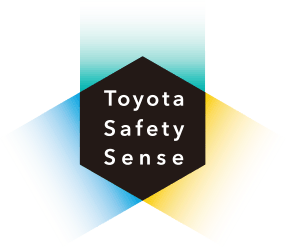
Toyota Safety Senseᵀᴹ¹
Standard on most models, Toyota Safety SenseTM (TSS) is an advanced suite of active safety features that are designed to support your awareness and decision-making across a range of speeds and driving conditions.
1 Drivers should always be responsible for their own safe driving. Please always pay attention to your surroundings and drive safely. Depending on the conditions of roads, vehicles, weather, etc., the TSS systems may not work as intended. Please see toyota.ca, your local Toyota Dealer or Owner’s Manual for details.
3 The Pre-Collision System (PCS) is designed to determine if impact is imminent and help reduce impact speed and damage in certain frontal collisions involving a vehicle, a pedestrian, bicyclist or motorcyclist. It is not a substitute for safe and attentive driving. System effectiveness depends on many factors, such as speed, size and position of vehicle, pedestrian, bicyclist or motorcyclist and weather, light and road conditions. See Owner's Manual for additional limitations and details.
5 Lane Departure Alert with Steering Assist is designed to read visible lane markers under certain conditions. It provides a visual and audible alert and slight steering force when lane departure is detected. It is not a collision-avoidance system or a substitute for safe and attentive driving. Effectiveness is dependent on many factors including road, weather and vehicle conditions. See Owner’s Manual for additional limitations and details.
6 Automatic High Beams operate at speeds above 34 km/h. Factors such as a dirty windshield, weather, lighting and terrain limit effectiveness, requiring the driver to manually operate the high beams. See Owner’s Manual for additional limitations and details.
7 Dynamic Radar Cruise Control (DRCC) is designed to assist the driver and is not a substitute for safe and attentive driving practices. System effectiveness is dependent on many factors including road, weather and traffic conditions. Vehicles with manual transmission have regular DRCC. See Owner’s Manual for additional limitations and details.
8 The Lane Tracing Assist lane centering function is designed to read visible lane markers and detect other vehicles under certain conditions. It is only operational when DRCC is engaged. Not available on vehicles with manual transmissions. See Owner’s Manual for additional limitations and details
9 Intersection Turning Assist System
The Intersection Turning Assist system is designed to detect a pedestrian or approaching vehicle at intersections under certain conditions, determine if impact is imminent and help reduce impact speed. It is not a substitute for safe and attentive driving. System effectiveness depends on many factors, such as speed, type of turning maneuver, intersection layout, size and position of pedestrian and weather, light and road conditions. See Owner’s Manual for additional limitations and details.
TSS features can vary depending on the model you choose.
TSS-P features advanced technologies including Pre-Collision System, Lane Departure Alert, Dynamic Radar Cruise Control, and Automatic High Beam.
TSS 2.0 builds on TSS-P, and consists of up to six active safety and driver assistance systems.
TSS 2.5 and 2.5+ add new capabilities to the Pre-Collision and Dynamic Radar Cruise Control Systems, and enhance Lane Departure Alert and Lane Tracing Assist.
TSS 3.0 brings even more advances, including Motorcycle Detection, Proactive Driving Assist, and Road Sign Assist.
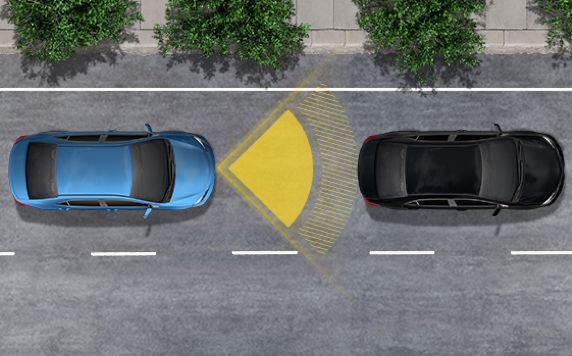
PRE-COLLISION SYSTEM
Pre-Collision System (PCS) provides collision avoidance or collision mitigation support in certain situations where a frontal collision is likely to occur, and in some cases, will automatically apply the brakes to help the driver. PCS can also help detect pedestrians in certain situations.
Watch the Pre-Collision System with Pedestrian Detection video
PCS is also designed to help detect bicyclists in daytime situations, as well as vehicles and pedestrians in both daytime and low-light situations.
Watch the Pre-Collision System with Pedestrian and Bicycle Detection Video
PCS in TSS 2.5 and 2.5+ may warn you of oncoming pedestrians or vehicles when making a left turn at an intersection, as well as an on-coming pedestrian when performing a right-hand turn and provide emergency braking in certain conditions. They also feature Emergency Steering Assist, which is designed to stabilize the driver’s emergency steering maneuver and keep the vehicle in its lane when avoiding pedestrian, cyclist or another vehicle under specific conditions.
PCS in TSS 3.0 may warn you of oncoming pedestrians or vehicles when making a left turn at an intersection, as well as an on-coming pedestrian when performing a right-hand turn and provide emergency braking in certain conditions. They also feature Emergency Steering Assist, which is designed to stabilize the driver’s emergency steering maneuver and keep the vehicle in its lane when avoiding pedestrian, cyclist or another vehicle under specific conditions. PCS is further enhanced with TSS 3.0 and adds intersection collision avoidance for crossing vehicles, low speed collision avoidance to prevent rear ending another vehicle. In certain situations it can also help detect motorcycles.
1 Drivers should always be responsible for their own safe driving. Please always pay attention to your surroundings and drive safely. Depending on the conditions of roads, vehicles, weather, etc., the TSS systems may not work as intended. Please see toyota.ca, your local Toyota Dealer or Owner’s Manual for details.
3 The Pre-Collision System (PCS) is designed to determine if impact is imminent and help reduce impact speed and damage in certain frontal collisions involving a vehicle, a pedestrian, bicyclist or motorcyclist. It is not a substitute for safe and attentive driving. System effectiveness depends on many factors, such as speed, size and position of vehicle, pedestrian, bicyclist or motorcyclist and weather, light and road conditions. See Owner's Manual for additional limitations and details.
5 Lane Departure Alert with Steering Assist is designed to read visible lane markers under certain conditions. It provides a visual and audible alert and slight steering force when lane departure is detected. It is not a collision-avoidance system or a substitute for safe and attentive driving. Effectiveness is dependent on many factors including road, weather and vehicle conditions. See Owner’s Manual for additional limitations and details.
6 Automatic High Beams operate at speeds above 34 km/h. Factors such as a dirty windshield, weather, lighting and terrain limit effectiveness, requiring the driver to manually operate the high beams. See Owner’s Manual for additional limitations and details.
7 Dynamic Radar Cruise Control (DRCC) is designed to assist the driver and is not a substitute for safe and attentive driving practices. System effectiveness is dependent on many factors including road, weather and traffic conditions. Vehicles with manual transmission have regular DRCC. See Owner’s Manual for additional limitations and details.
8 The Lane Tracing Assist lane centering function is designed to read visible lane markers and detect other vehicles under certain conditions. It is only operational when DRCC is engaged. Not available on vehicles with manual transmissions. See Owner’s Manual for additional limitations and details
9 Intersection Turning Assist System
The Intersection Turning Assist system is designed to detect a pedestrian or approaching vehicle at intersections under certain conditions, determine if impact is imminent and help reduce impact speed. It is not a substitute for safe and attentive driving. System effectiveness depends on many factors, such as speed, type of turning maneuver, intersection layout, size and position of pedestrian and weather, light and road conditions. See Owner’s Manual for additional limitations and details.
.
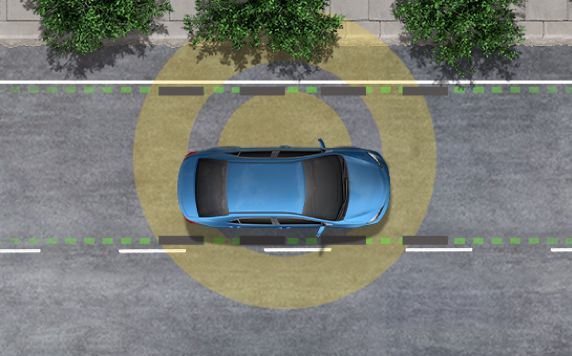
LANE DEPARTURE ALERT
Lane Departure Alert (LDA) alerts you if you start to drift out of your lane when visible white/yellow lane markings are detected. Some models with TSS-P may include the Steering Assist function and may also provide small corrective steering inputs.
Watch Lane Departure Alert with Steering Assist Video
LDA for TSS 2.0 alerts you if you start to drift out of your lane when visible white/yellow lane markings, as well as road edges or curbs at certain speeds, are detected. Steering Assist may also provide gentle corrective steering inputs if action is not taken.
Watch the Lane Departure Alert with Steering Assist Video
Lane Departure Alert for TSS 2.5 and 2.5+ alerts you if you start to drift out of your lane when visible white/yellow lane markings, as well as road edges or curbs at certain speeds, are detected. Steering Assist may also provide gentle corrective steering inputs if action is not taken.
Lane Departure Alert for TSS 3.0 includes features from TSS 2.5 and 2.5+ like Steering Assist and Road Edge Detection. But for added peace of mind, TSS also includes added features like Guard Rail Detection, which can alert the driver if they are getting too close to guardrail. TSS 3.0 also adds Motorcycle Detection.
1 Drivers should always be responsible for their own safe driving. Please always pay attention to your surroundings and drive safely. Depending on the conditions of roads, vehicles, weather, etc., the TSS systems may not work as intended. Please see toyota.ca, your local Toyota Dealer or Owner’s Manual for details.
3 The Pre-Collision System (PCS) is designed to determine if impact is imminent and help reduce impact speed and damage in certain frontal collisions involving a vehicle, a pedestrian, bicyclist or motorcyclist. It is not a substitute for safe and attentive driving. System effectiveness depends on many factors, such as speed, size and position of vehicle, pedestrian, bicyclist or motorcyclist and weather, light and road conditions. See Owner's Manual for additional limitations and details.
5 Lane Departure Alert with Steering Assist is designed to read visible lane markers under certain conditions. It provides a visual and audible alert and slight steering force when lane departure is detected. It is not a collision-avoidance system or a substitute for safe and attentive driving. Effectiveness is dependent on many factors including road, weather and vehicle conditions. See Owner’s Manual for additional limitations and details.
6 Automatic High Beams operate at speeds above 34 km/h. Factors such as a dirty windshield, weather, lighting and terrain limit effectiveness, requiring the driver to manually operate the high beams. See Owner’s Manual for additional limitations and details.
7 Dynamic Radar Cruise Control (DRCC) is designed to assist the driver and is not a substitute for safe and attentive driving practices. System effectiveness is dependent on many factors including road, weather and traffic conditions. Vehicles with manual transmission have regular DRCC. See Owner’s Manual for additional limitations and details.
8 The Lane Tracing Assist lane centering function is designed to read visible lane markers and detect other vehicles under certain conditions. It is only operational when DRCC is engaged. Not available on vehicles with manual transmissions. See Owner’s Manual for additional limitations and details
9 Intersection Turning Assist System
The Intersection Turning Assist system is designed to detect a pedestrian or approaching vehicle at intersections under certain conditions, determine if impact is imminent and help reduce impact speed. It is not a substitute for safe and attentive driving. System effectiveness depends on many factors, such as speed, type of turning maneuver, intersection layout, size and position of pedestrian and weather, light and road conditions. See Owner’s Manual for additional limitations and details.
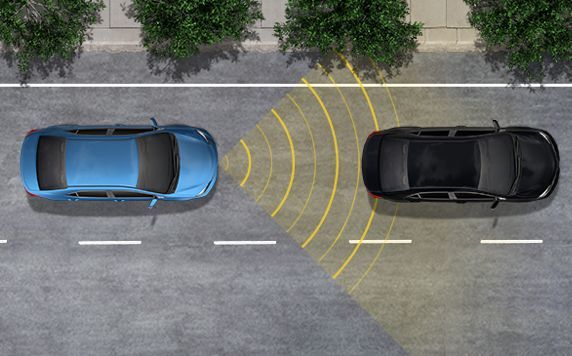
DYNAMIC RADAR CRUISE CONTROL
Intended for highway use, Dynamic Radar Cruise Control (DRCC), can automatically adjust your vehicle speed to maintain a preset following distance between you and the vehicle directly in front of you. The system is designed to work between speeds of approximately 40 km/h to 180 km/h.
Watch the Dynamic Radar Cruise Control Video
Full Speed Range Dynamic Radar Cruise Control can also perform vehicle-to-vehicle distance control down to 0 km/h, and resume from a complete stop.
Watch the Dynamic Radar Cruise Control Video
DRCC in TSS 2.5+ and 3.0 is enhanced with a Curve Speed Management function that will determine if the vehicle speed needs to be reduced when approaching a curve on the road and decelerate automatically when driving through a curve if required.
1 Drivers should always be responsible for their own safe driving. Please always pay attention to your surroundings and drive safely. Depending on the conditions of roads, vehicles, weather, etc., the TSS systems may not work as intended. Please see toyota.ca, your local Toyota Dealer or Owner’s Manual for details.
3 The Pre-Collision System (PCS) is designed to determine if impact is imminent and help reduce impact speed and damage in certain frontal collisions involving a vehicle, a pedestrian, bicyclist or motorcyclist. It is not a substitute for safe and attentive driving. System effectiveness depends on many factors, such as speed, size and position of vehicle, pedestrian, bicyclist or motorcyclist and weather, light and road conditions. See Owner's Manual for additional limitations and details.
5 Lane Departure Alert with Steering Assist is designed to read visible lane markers under certain conditions. It provides a visual and audible alert and slight steering force when lane departure is detected. It is not a collision-avoidance system or a substitute for safe and attentive driving. Effectiveness is dependent on many factors including road, weather and vehicle conditions. See Owner’s Manual for additional limitations and details.
6 Automatic High Beams operate at speeds above 34 km/h. Factors such as a dirty windshield, weather, lighting and terrain limit effectiveness, requiring the driver to manually operate the high beams. See Owner’s Manual for additional limitations and details.
7 Dynamic Radar Cruise Control (DRCC) is designed to assist the driver and is not a substitute for safe and attentive driving practices. System effectiveness is dependent on many factors including road, weather and traffic conditions. Vehicles with manual transmission have regular DRCC. See Owner’s Manual for additional limitations and details.
8 The Lane Tracing Assist lane centering function is designed to read visible lane markers and detect other vehicles under certain conditions. It is only operational when DRCC is engaged. Not available on vehicles with manual transmissions. See Owner’s Manual for additional limitations and details
9 Intersection Turning Assist System
The Intersection Turning Assist system is designed to detect a pedestrian or approaching vehicle at intersections under certain conditions, determine if impact is imminent and help reduce impact speed. It is not a substitute for safe and attentive driving. System effectiveness depends on many factors, such as speed, type of turning maneuver, intersection layout, size and position of pedestrian and weather, light and road conditions. See Owner’s Manual for additional limitations and details.
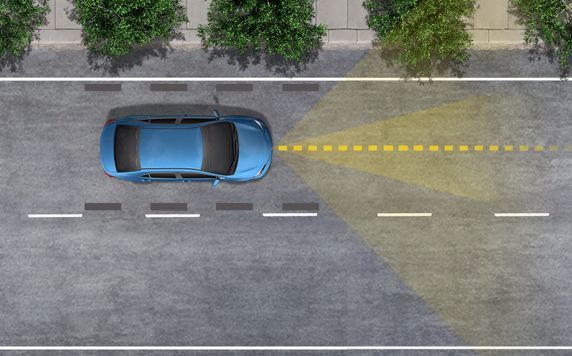
LANE TRACING ASSIST
In models with Lane Tracing Assist (LTA), LTA works with Dynamic Radar Cruise Control to keep the vehicle centered in its visibly marked lane and preemptively avoid unintended lane departures.
Watch Lane Tracing Assist Video
On vehicles equipped with TSS 2.5 and 2.5+ the lane recognition performance may now recognize the line of travel in situations where road markings may have been temporarily interrupted.
Vehicles equipped with TSS 3.0 now host valuable additional features like Offset Passing, and Emergency Driving Stop System which can bring the vehicles to a stop under certain conditions where an inattentive driver may not be responding to prompts to retain control of the vehicle.
1 Drivers should always be responsible for their own safe driving. Please always pay attention to your surroundings and drive safely. Depending on the conditions of roads, vehicles, weather, etc., the TSS systems may not work as intended. Please see toyota.ca, your local Toyota Dealer or Owner’s Manual for details.
3 The Pre-Collision System (PCS) is designed to determine if impact is imminent and help reduce impact speed and damage in certain frontal collisions involving a vehicle, a pedestrian, bicyclist or motorcyclist. It is not a substitute for safe and attentive driving. System effectiveness depends on many factors, such as speed, size and position of vehicle, pedestrian, bicyclist or motorcyclist and weather, light and road conditions. See Owner's Manual for additional limitations and details.
5 Lane Departure Alert with Steering Assist is designed to read visible lane markers under certain conditions. It provides a visual and audible alert and slight steering force when lane departure is detected. It is not a collision-avoidance system or a substitute for safe and attentive driving. Effectiveness is dependent on many factors including road, weather and vehicle conditions. See Owner’s Manual for additional limitations and details.
6 Automatic High Beams operate at speeds above 34 km/h. Factors such as a dirty windshield, weather, lighting and terrain limit effectiveness, requiring the driver to manually operate the high beams. See Owner’s Manual for additional limitations and details.
7 Dynamic Radar Cruise Control (DRCC) is designed to assist the driver and is not a substitute for safe and attentive driving practices. System effectiveness is dependent on many factors including road, weather and traffic conditions. Vehicles with manual transmission have regular DRCC. See Owner’s Manual for additional limitations and details.
8 The Lane Tracing Assist lane centering function is designed to read visible lane markers and detect other vehicles under certain conditions. It is only operational when DRCC is engaged. Not available on vehicles with manual transmissions. See Owner’s Manual for additional limitations and details
9 Intersection Turning Assist System
The Intersection Turning Assist system is designed to detect a pedestrian or approaching vehicle at intersections under certain conditions, determine if impact is imminent and help reduce impact speed. It is not a substitute for safe and attentive driving. System effectiveness depends on many factors, such as speed, type of turning maneuver, intersection layout, size and position of pedestrian and weather, light and road conditions. See Owner’s Manual for additional limitations and details.
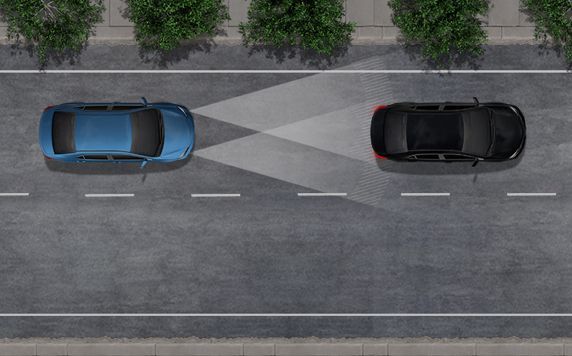
AUTOMATIC HIGH BEAM
All TSS packages feature Automatic High Beam (AHB) headlamps. The system reacts to oncoming headlamps or preceding taillamps, automatically switching from high-beam to low-beam and then back again once the coast is clear.
1 Drivers should always be responsible for their own safe driving. Please always pay attention to your surroundings and drive safely. Depending on the conditions of roads, vehicles, weather, etc., the TSS systems may not work as intended. Please see toyota.ca, your local Toyota Dealer or Owner’s Manual for details.
3 The Pre-Collision System (PCS) is designed to determine if impact is imminent and help reduce impact speed and damage in certain frontal collisions involving a vehicle, a pedestrian, bicyclist or motorcyclist. It is not a substitute for safe and attentive driving. System effectiveness depends on many factors, such as speed, size and position of vehicle, pedestrian, bicyclist or motorcyclist and weather, light and road conditions. See Owner's Manual for additional limitations and details.
5 Lane Departure Alert with Steering Assist is designed to read visible lane markers under certain conditions. It provides a visual and audible alert and slight steering force when lane departure is detected. It is not a collision-avoidance system or a substitute for safe and attentive driving. Effectiveness is dependent on many factors including road, weather and vehicle conditions. See Owner’s Manual for additional limitations and details.
6 Automatic High Beams operate at speeds above 34 km/h. Factors such as a dirty windshield, weather, lighting and terrain limit effectiveness, requiring the driver to manually operate the high beams. See Owner’s Manual for additional limitations and details.
7 Dynamic Radar Cruise Control (DRCC) is designed to assist the driver and is not a substitute for safe and attentive driving practices. System effectiveness is dependent on many factors including road, weather and traffic conditions. Vehicles with manual transmission have regular DRCC. See Owner’s Manual for additional limitations and details.
8 The Lane Tracing Assist lane centering function is designed to read visible lane markers and detect other vehicles under certain conditions. It is only operational when DRCC is engaged. Not available on vehicles with manual transmissions. See Owner’s Manual for additional limitations and details
9 Intersection Turning Assist System
The Intersection Turning Assist system is designed to detect a pedestrian or approaching vehicle at intersections under certain conditions, determine if impact is imminent and help reduce impact speed. It is not a substitute for safe and attentive driving. System effectiveness depends on many factors, such as speed, type of turning maneuver, intersection layout, size and position of pedestrian and weather, light and road conditions. See Owner’s Manual for additional limitations and details.
Choose a vehicle to see which Toyota Safety SenseTM package and features come standard
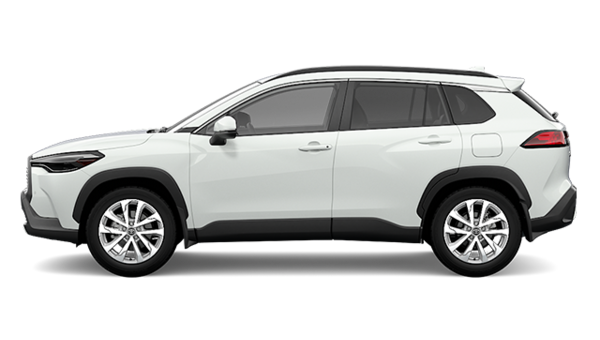
Photo for illustrative purposes only.
Lease from as low as
with $0 cash down
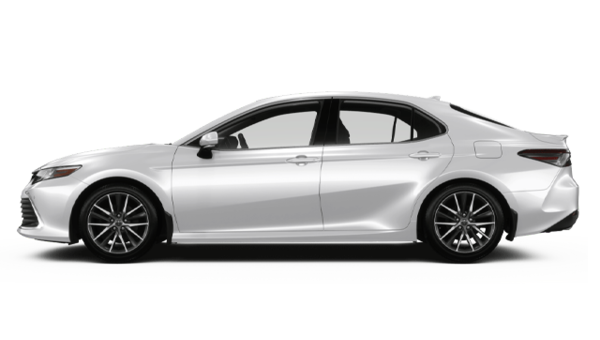
Photo for illustrative purposes only.
Finance from as low as
with $0 cash down
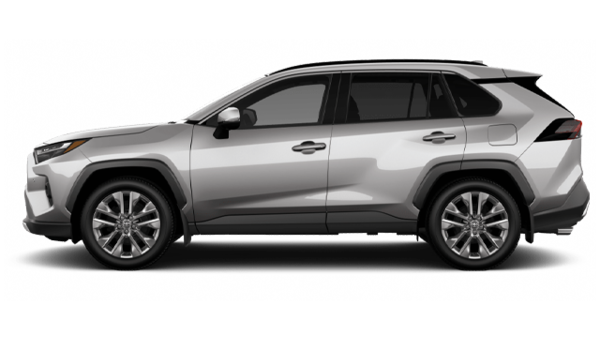
Photo for illustrative purposes only.
Lease from as low as
with $0 cash down
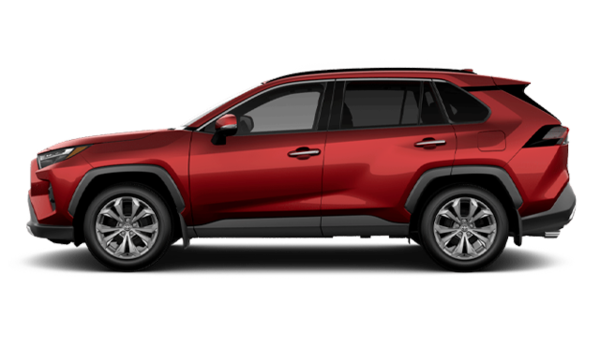
Photo for illustrative purposes only.
Lease from as low as
with $0 cash down
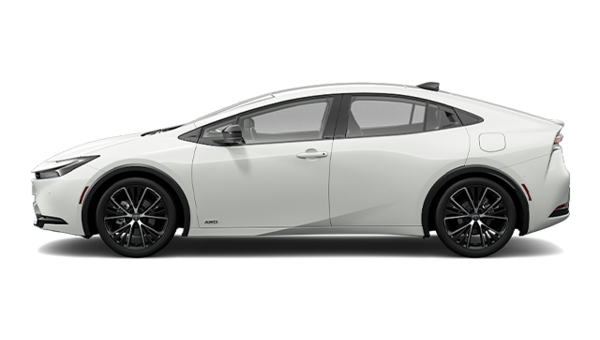
Photo for illustrative purposes only.
Lease from as low as
with $0 cash down
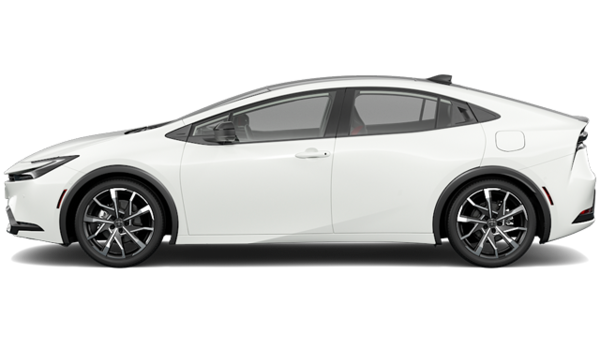
Photo for illustrative purposes only.
Lease from as low as
with $0 cash down

Photo for illustrative purposes only.
Lease from as low as
with $0 cash down
Save up to
$2,000
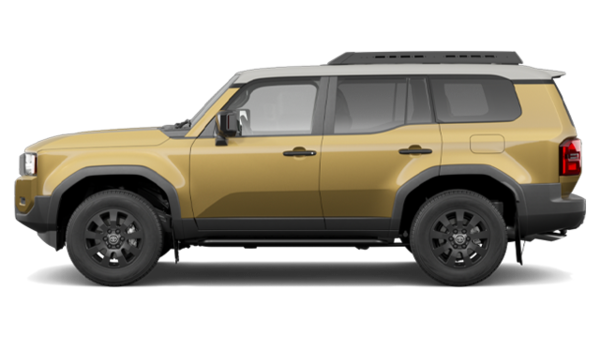
Photo for illustrative purposes only.
was
$72,219
Lease from as low as
with $0 cash down
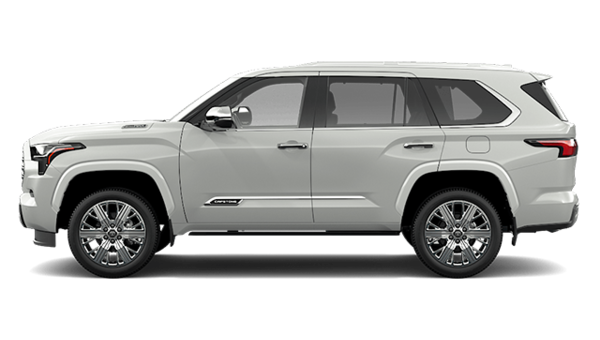
Photo for illustrative purposes only.
Lease from as low as
with $0 cash down

Anti-Lock Brake System (ABS)
ABS helps prevent brakes from locking up by pulsing brake pressure to each wheel to help you stay in control in emergency braking situations.
Brake Assist (BA)
Brake Assist is designed to detect sudden or "panic" braking and then add the full pressure needed to help prevent a collision.
Smart Stop Technology
This advanced technology automatically cuts engine power and allows the brakes to take precedence over the accelerator when both pedals are pressed at the same time.
Vehicle Stability Control (VSC)
VSC helps prevent wheelslip and loss of traction by reducing engine power and applying brake force to the wheels that need it.
Traction Control (TRAC)
Traction Control helps maintain traction on wet, icy, loose or uneven surfaces by applying brake force to the spinning wheel(s).
Electronic Brake Force Distribution (EBD)
Toyota's ABS technology has Electronic Brake-force Distribution (EBD) to help keep the vehicle more stable and balanced when braking.
Standard on all Toyota vehicles, Star Safety SystemTM features six accident avoidance technologies to enhance your vehicle’s stability, braking, and traction.
Explore some of our other advanced systems that help keep you safer from the moment you get behind the wheel.

















Parking Assist

Backup Camera

Blind Spot Monitor

Rear Cross Traffic Alert

Vehicle Stability Control

Traction Control

Hill Start Assist Control

Downhill Assist Control
Safety Awards are one measure of our journey towards an accident-free world. Awards from the Insurance Institute for Highway Safety (IIHS) are the milestones by which we measure our success.
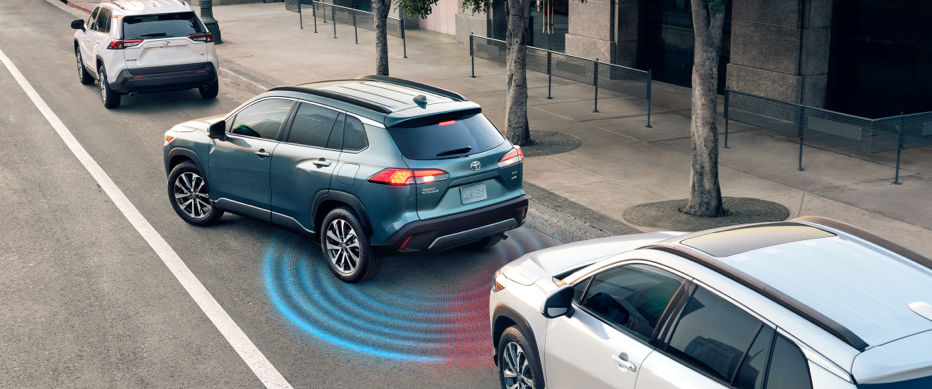
Along with years of driving enjoyment, the quality we build in at every step of production also serves to enhance your safety when behind the wheel.
In addition to thousands of virtual simulations, Toyota conducts more that 1,600 vehicle crash tests each year – all to learn more about keeping you, your passengers, other drivers, and all of those who share the roads safer. Through a series of comprehensive crash tests, with sensors feeding data at critical moments, we’re able to analyze the effects of impact, and design critical improvements.
Take our airbags, for example. Not only do electronic connections for the airbag system have gold-plated terminals, making them immune to corrosion, every single airbag that comes out of a Toyota plant is inspected three separate times on the production line before being connected.
In 2015, we introduced our Toyota New Global Architecture (TNGA), a complete re-engineering of our powertrains and platforms, designed to make Toyota vehicles better in every way — including stronger, safer and able to readily integrate ever-more advanced safety systems.
1 Drivers should always be responsible for their own safe driving. Please always pay attention to your surroundings and drive safely. Depending on the conditions of roads, vehicles, weather, etc., the TSS systems may not work as intended. Please see toyota.ca, your local Toyota Dealer or Owner’s Manual for details.
3 The Pre-Collision System (PCS) is designed to determine if impact is imminent and help reduce impact speed and damage in certain frontal collisions involving a vehicle, a pedestrian, bicyclist or motorcyclist. It is not a substitute for safe and attentive driving. System effectiveness depends on many factors, such as speed, size and position of vehicle, pedestrian, bicyclist or motorcyclist and weather, light and road conditions. See Owner's Manual for additional limitations and details.
5 Lane Departure Alert with Steering Assist is designed to read visible lane markers under certain conditions. It provides a visual and audible alert and slight steering force when lane departure is detected. It is not a collision-avoidance system or a substitute for safe and attentive driving. Effectiveness is dependent on many factors including road, weather and vehicle conditions. See Owner’s Manual for additional limitations and details.
6 Automatic High Beams operate at speeds above 34 km/h. Factors such as a dirty windshield, weather, lighting and terrain limit effectiveness, requiring the driver to manually operate the high beams. See Owner’s Manual for additional limitations and details.
7 Dynamic Radar Cruise Control (DRCC) is designed to assist the driver and is not a substitute for safe and attentive driving practices. System effectiveness is dependent on many factors including road, weather and traffic conditions. Vehicles with manual transmission have regular DRCC. See Owner’s Manual for additional limitations and details.
8 The Lane Tracing Assist lane centering function is designed to read visible lane markers and detect other vehicles under certain conditions. It is only operational when DRCC is engaged. Not available on vehicles with manual transmissions. See Owner’s Manual for additional limitations and details
9 Intersection Turning Assist System
The Intersection Turning Assist system is designed to detect a pedestrian or approaching vehicle at intersections under certain conditions, determine if impact is imminent and help reduce impact speed. It is not a substitute for safe and attentive driving. System effectiveness depends on many factors, such as speed, type of turning maneuver, intersection layout, size and position of pedestrian and weather, light and road conditions. See Owner’s Manual for additional limitations and details.
Watch the Pre-Collision System with Pedestrian Detection video
Watch the Pre-Collision System with Pedestrian and Bicycle Detection Video
1 Drivers should always be responsible for their own safe driving. Please always pay attention to your surroundings and drive safely. Depending on the conditions of roads, vehicles, weather, etc., the TSS systems may not work as intended. Please see toyota.ca, your local Toyota Dealer or Owner’s Manual for details.
3 The Pre-Collision System (PCS) is designed to determine if impact is imminent and help reduce impact speed and damage in certain frontal collisions involving a vehicle, a pedestrian, bicyclist or motorcyclist. It is not a substitute for safe and attentive driving. System effectiveness depends on many factors, such as speed, size and position of vehicle, pedestrian, bicyclist or motorcyclist and weather, light and road conditions. See Owner's Manual for additional limitations and details.
5 Lane Departure Alert with Steering Assist is designed to read visible lane markers under certain conditions. It provides a visual and audible alert and slight steering force when lane departure is detected. It is not a collision-avoidance system or a substitute for safe and attentive driving. Effectiveness is dependent on many factors including road, weather and vehicle conditions. See Owner’s Manual for additional limitations and details.
6 Automatic High Beams operate at speeds above 34 km/h. Factors such as a dirty windshield, weather, lighting and terrain limit effectiveness, requiring the driver to manually operate the high beams. See Owner’s Manual for additional limitations and details.
7 Dynamic Radar Cruise Control (DRCC) is designed to assist the driver and is not a substitute for safe and attentive driving practices. System effectiveness is dependent on many factors including road, weather and traffic conditions. Vehicles with manual transmission have regular DRCC. See Owner’s Manual for additional limitations and details.
8 The Lane Tracing Assist lane centering function is designed to read visible lane markers and detect other vehicles under certain conditions. It is only operational when DRCC is engaged. Not available on vehicles with manual transmissions. See Owner’s Manual for additional limitations and details
9 Intersection Turning Assist System
The Intersection Turning Assist system is designed to detect a pedestrian or approaching vehicle at intersections under certain conditions, determine if impact is imminent and help reduce impact speed. It is not a substitute for safe and attentive driving. System effectiveness depends on many factors, such as speed, type of turning maneuver, intersection layout, size and position of pedestrian and weather, light and road conditions. See Owner’s Manual for additional limitations and details.
.
Watch Lane Departure Alert with Steering Assist Video
Watch the Lane Departure Alert with Steering Assist Video
1 Drivers should always be responsible for their own safe driving. Please always pay attention to your surroundings and drive safely. Depending on the conditions of roads, vehicles, weather, etc., the TSS systems may not work as intended. Please see toyota.ca, your local Toyota Dealer or Owner’s Manual for details.
3 The Pre-Collision System (PCS) is designed to determine if impact is imminent and help reduce impact speed and damage in certain frontal collisions involving a vehicle, a pedestrian, bicyclist or motorcyclist. It is not a substitute for safe and attentive driving. System effectiveness depends on many factors, such as speed, size and position of vehicle, pedestrian, bicyclist or motorcyclist and weather, light and road conditions. See Owner's Manual for additional limitations and details.
5 Lane Departure Alert with Steering Assist is designed to read visible lane markers under certain conditions. It provides a visual and audible alert and slight steering force when lane departure is detected. It is not a collision-avoidance system or a substitute for safe and attentive driving. Effectiveness is dependent on many factors including road, weather and vehicle conditions. See Owner’s Manual for additional limitations and details.
6 Automatic High Beams operate at speeds above 34 km/h. Factors such as a dirty windshield, weather, lighting and terrain limit effectiveness, requiring the driver to manually operate the high beams. See Owner’s Manual for additional limitations and details.
7 Dynamic Radar Cruise Control (DRCC) is designed to assist the driver and is not a substitute for safe and attentive driving practices. System effectiveness is dependent on many factors including road, weather and traffic conditions. Vehicles with manual transmission have regular DRCC. See Owner’s Manual for additional limitations and details.
8 The Lane Tracing Assist lane centering function is designed to read visible lane markers and detect other vehicles under certain conditions. It is only operational when DRCC is engaged. Not available on vehicles with manual transmissions. See Owner’s Manual for additional limitations and details
9 Intersection Turning Assist System
The Intersection Turning Assist system is designed to detect a pedestrian or approaching vehicle at intersections under certain conditions, determine if impact is imminent and help reduce impact speed. It is not a substitute for safe and attentive driving. System effectiveness depends on many factors, such as speed, type of turning maneuver, intersection layout, size and position of pedestrian and weather, light and road conditions. See Owner’s Manual for additional limitations and details.
Watch the Dynamic Radar Cruise Control Video
Watch the Dynamic Radar Cruise Control Video
1 Drivers should always be responsible for their own safe driving. Please always pay attention to your surroundings and drive safely. Depending on the conditions of roads, vehicles, weather, etc., the TSS systems may not work as intended. Please see toyota.ca, your local Toyota Dealer or Owner’s Manual for details.
3 The Pre-Collision System (PCS) is designed to determine if impact is imminent and help reduce impact speed and damage in certain frontal collisions involving a vehicle, a pedestrian, bicyclist or motorcyclist. It is not a substitute for safe and attentive driving. System effectiveness depends on many factors, such as speed, size and position of vehicle, pedestrian, bicyclist or motorcyclist and weather, light and road conditions. See Owner's Manual for additional limitations and details.
5 Lane Departure Alert with Steering Assist is designed to read visible lane markers under certain conditions. It provides a visual and audible alert and slight steering force when lane departure is detected. It is not a collision-avoidance system or a substitute for safe and attentive driving. Effectiveness is dependent on many factors including road, weather and vehicle conditions. See Owner’s Manual for additional limitations and details.
6 Automatic High Beams operate at speeds above 34 km/h. Factors such as a dirty windshield, weather, lighting and terrain limit effectiveness, requiring the driver to manually operate the high beams. See Owner’s Manual for additional limitations and details.
7 Dynamic Radar Cruise Control (DRCC) is designed to assist the driver and is not a substitute for safe and attentive driving practices. System effectiveness is dependent on many factors including road, weather and traffic conditions. Vehicles with manual transmission have regular DRCC. See Owner’s Manual for additional limitations and details.
8 The Lane Tracing Assist lane centering function is designed to read visible lane markers and detect other vehicles under certain conditions. It is only operational when DRCC is engaged. Not available on vehicles with manual transmissions. See Owner’s Manual for additional limitations and details
9 Intersection Turning Assist System
The Intersection Turning Assist system is designed to detect a pedestrian or approaching vehicle at intersections under certain conditions, determine if impact is imminent and help reduce impact speed. It is not a substitute for safe and attentive driving. System effectiveness depends on many factors, such as speed, type of turning maneuver, intersection layout, size and position of pedestrian and weather, light and road conditions. See Owner’s Manual for additional limitations and details.
Watch Lane Tracing Assist Video
1 Drivers should always be responsible for their own safe driving. Please always pay attention to your surroundings and drive safely. Depending on the conditions of roads, vehicles, weather, etc., the TSS systems may not work as intended. Please see toyota.ca, your local Toyota Dealer or Owner’s Manual for details.
3 The Pre-Collision System (PCS) is designed to determine if impact is imminent and help reduce impact speed and damage in certain frontal collisions involving a vehicle, a pedestrian, bicyclist or motorcyclist. It is not a substitute for safe and attentive driving. System effectiveness depends on many factors, such as speed, size and position of vehicle, pedestrian, bicyclist or motorcyclist and weather, light and road conditions. See Owner's Manual for additional limitations and details.
5 Lane Departure Alert with Steering Assist is designed to read visible lane markers under certain conditions. It provides a visual and audible alert and slight steering force when lane departure is detected. It is not a collision-avoidance system or a substitute for safe and attentive driving. Effectiveness is dependent on many factors including road, weather and vehicle conditions. See Owner’s Manual for additional limitations and details.
6 Automatic High Beams operate at speeds above 34 km/h. Factors such as a dirty windshield, weather, lighting and terrain limit effectiveness, requiring the driver to manually operate the high beams. See Owner’s Manual for additional limitations and details.
7 Dynamic Radar Cruise Control (DRCC) is designed to assist the driver and is not a substitute for safe and attentive driving practices. System effectiveness is dependent on many factors including road, weather and traffic conditions. Vehicles with manual transmission have regular DRCC. See Owner’s Manual for additional limitations and details.
8 The Lane Tracing Assist lane centering function is designed to read visible lane markers and detect other vehicles under certain conditions. It is only operational when DRCC is engaged. Not available on vehicles with manual transmissions. See Owner’s Manual for additional limitations and details
9 Intersection Turning Assist System
The Intersection Turning Assist system is designed to detect a pedestrian or approaching vehicle at intersections under certain conditions, determine if impact is imminent and help reduce impact speed. It is not a substitute for safe and attentive driving. System effectiveness depends on many factors, such as speed, type of turning maneuver, intersection layout, size and position of pedestrian and weather, light and road conditions. See Owner’s Manual for additional limitations and details.
1 Drivers should always be responsible for their own safe driving. Please always pay attention to your surroundings and drive safely. Depending on the conditions of roads, vehicles, weather, etc., the TSS systems may not work as intended. Please see toyota.ca, your local Toyota Dealer or Owner’s Manual for details.
3 The Pre-Collision System (PCS) is designed to determine if impact is imminent and help reduce impact speed and damage in certain frontal collisions involving a vehicle, a pedestrian, bicyclist or motorcyclist. It is not a substitute for safe and attentive driving. System effectiveness depends on many factors, such as speed, size and position of vehicle, pedestrian, bicyclist or motorcyclist and weather, light and road conditions. See Owner's Manual for additional limitations and details.
5 Lane Departure Alert with Steering Assist is designed to read visible lane markers under certain conditions. It provides a visual and audible alert and slight steering force when lane departure is detected. It is not a collision-avoidance system or a substitute for safe and attentive driving. Effectiveness is dependent on many factors including road, weather and vehicle conditions. See Owner’s Manual for additional limitations and details.
6 Automatic High Beams operate at speeds above 34 km/h. Factors such as a dirty windshield, weather, lighting and terrain limit effectiveness, requiring the driver to manually operate the high beams. See Owner’s Manual for additional limitations and details.
7 Dynamic Radar Cruise Control (DRCC) is designed to assist the driver and is not a substitute for safe and attentive driving practices. System effectiveness is dependent on many factors including road, weather and traffic conditions. Vehicles with manual transmission have regular DRCC. See Owner’s Manual for additional limitations and details.
8 The Lane Tracing Assist lane centering function is designed to read visible lane markers and detect other vehicles under certain conditions. It is only operational when DRCC is engaged. Not available on vehicles with manual transmissions. See Owner’s Manual for additional limitations and details
9 Intersection Turning Assist System
The Intersection Turning Assist system is designed to detect a pedestrian or approaching vehicle at intersections under certain conditions, determine if impact is imminent and help reduce impact speed. It is not a substitute for safe and attentive driving. System effectiveness depends on many factors, such as speed, type of turning maneuver, intersection layout, size and position of pedestrian and weather, light and road conditions. See Owner’s Manual for additional limitations and details.
Watch the Pre-Collision System with Pedestrian Detection video
Watch the Pre-Collision System with Pedestrian and Bicycle Detection Video
1 Drivers should always be responsible for their own safe driving. Please always pay attention to your surroundings and drive safely. Depending on the conditions of roads, vehicles, weather, etc., the TSS systems may not work as intended. Please see toyota.ca, your local Toyota Dealer or Owner’s Manual for details.
3 The Pre-Collision System (PCS) is designed to determine if impact is imminent and help reduce impact speed and damage in certain frontal collisions involving a vehicle, a pedestrian, bicyclist or motorcyclist. It is not a substitute for safe and attentive driving. System effectiveness depends on many factors, such as speed, size and position of vehicle, pedestrian, bicyclist or motorcyclist and weather, light and road conditions. See Owner's Manual for additional limitations and details.
5 Lane Departure Alert with Steering Assist is designed to read visible lane markers under certain conditions. It provides a visual and audible alert and slight steering force when lane departure is detected. It is not a collision-avoidance system or a substitute for safe and attentive driving. Effectiveness is dependent on many factors including road, weather and vehicle conditions. See Owner’s Manual for additional limitations and details.
6 Automatic High Beams operate at speeds above 34 km/h. Factors such as a dirty windshield, weather, lighting and terrain limit effectiveness, requiring the driver to manually operate the high beams. See Owner’s Manual for additional limitations and details.
7 Dynamic Radar Cruise Control (DRCC) is designed to assist the driver and is not a substitute for safe and attentive driving practices. System effectiveness is dependent on many factors including road, weather and traffic conditions. Vehicles with manual transmission have regular DRCC. See Owner’s Manual for additional limitations and details.
8 The Lane Tracing Assist lane centering function is designed to read visible lane markers and detect other vehicles under certain conditions. It is only operational when DRCC is engaged. Not available on vehicles with manual transmissions. See Owner’s Manual for additional limitations and details
9 Intersection Turning Assist System
The Intersection Turning Assist system is designed to detect a pedestrian or approaching vehicle at intersections under certain conditions, determine if impact is imminent and help reduce impact speed. It is not a substitute for safe and attentive driving. System effectiveness depends on many factors, such as speed, type of turning maneuver, intersection layout, size and position of pedestrian and weather, light and road conditions. See Owner’s Manual for additional limitations and details.
.
Watch Lane Departure Alert with Steering Assist Video
Watch the Lane Departure Alert with Steering Assist Video
1 Drivers should always be responsible for their own safe driving. Please always pay attention to your surroundings and drive safely. Depending on the conditions of roads, vehicles, weather, etc., the TSS systems may not work as intended. Please see toyota.ca, your local Toyota Dealer or Owner’s Manual for details.
3 The Pre-Collision System (PCS) is designed to determine if impact is imminent and help reduce impact speed and damage in certain frontal collisions involving a vehicle, a pedestrian, bicyclist or motorcyclist. It is not a substitute for safe and attentive driving. System effectiveness depends on many factors, such as speed, size and position of vehicle, pedestrian, bicyclist or motorcyclist and weather, light and road conditions. See Owner's Manual for additional limitations and details.
5 Lane Departure Alert with Steering Assist is designed to read visible lane markers under certain conditions. It provides a visual and audible alert and slight steering force when lane departure is detected. It is not a collision-avoidance system or a substitute for safe and attentive driving. Effectiveness is dependent on many factors including road, weather and vehicle conditions. See Owner’s Manual for additional limitations and details.
6 Automatic High Beams operate at speeds above 34 km/h. Factors such as a dirty windshield, weather, lighting and terrain limit effectiveness, requiring the driver to manually operate the high beams. See Owner’s Manual for additional limitations and details.
7 Dynamic Radar Cruise Control (DRCC) is designed to assist the driver and is not a substitute for safe and attentive driving practices. System effectiveness is dependent on many factors including road, weather and traffic conditions. Vehicles with manual transmission have regular DRCC. See Owner’s Manual for additional limitations and details.
8 The Lane Tracing Assist lane centering function is designed to read visible lane markers and detect other vehicles under certain conditions. It is only operational when DRCC is engaged. Not available on vehicles with manual transmissions. See Owner’s Manual for additional limitations and details
9 Intersection Turning Assist System
The Intersection Turning Assist system is designed to detect a pedestrian or approaching vehicle at intersections under certain conditions, determine if impact is imminent and help reduce impact speed. It is not a substitute for safe and attentive driving. System effectiveness depends on many factors, such as speed, type of turning maneuver, intersection layout, size and position of pedestrian and weather, light and road conditions. See Owner’s Manual for additional limitations and details.
Watch the Dynamic Radar Cruise Control Video
Watch the Dynamic Radar Cruise Control Video
1 Drivers should always be responsible for their own safe driving. Please always pay attention to your surroundings and drive safely. Depending on the conditions of roads, vehicles, weather, etc., the TSS systems may not work as intended. Please see toyota.ca, your local Toyota Dealer or Owner’s Manual for details.
3 The Pre-Collision System (PCS) is designed to determine if impact is imminent and help reduce impact speed and damage in certain frontal collisions involving a vehicle, a pedestrian, bicyclist or motorcyclist. It is not a substitute for safe and attentive driving. System effectiveness depends on many factors, such as speed, size and position of vehicle, pedestrian, bicyclist or motorcyclist and weather, light and road conditions. See Owner's Manual for additional limitations and details.
5 Lane Departure Alert with Steering Assist is designed to read visible lane markers under certain conditions. It provides a visual and audible alert and slight steering force when lane departure is detected. It is not a collision-avoidance system or a substitute for safe and attentive driving. Effectiveness is dependent on many factors including road, weather and vehicle conditions. See Owner’s Manual for additional limitations and details.
6 Automatic High Beams operate at speeds above 34 km/h. Factors such as a dirty windshield, weather, lighting and terrain limit effectiveness, requiring the driver to manually operate the high beams. See Owner’s Manual for additional limitations and details.
7 Dynamic Radar Cruise Control (DRCC) is designed to assist the driver and is not a substitute for safe and attentive driving practices. System effectiveness is dependent on many factors including road, weather and traffic conditions. Vehicles with manual transmission have regular DRCC. See Owner’s Manual for additional limitations and details.
8 The Lane Tracing Assist lane centering function is designed to read visible lane markers and detect other vehicles under certain conditions. It is only operational when DRCC is engaged. Not available on vehicles with manual transmissions. See Owner’s Manual for additional limitations and details
9 Intersection Turning Assist System
The Intersection Turning Assist system is designed to detect a pedestrian or approaching vehicle at intersections under certain conditions, determine if impact is imminent and help reduce impact speed. It is not a substitute for safe and attentive driving. System effectiveness depends on many factors, such as speed, type of turning maneuver, intersection layout, size and position of pedestrian and weather, light and road conditions. See Owner’s Manual for additional limitations and details.
Watch Lane Tracing Assist Video
1 Drivers should always be responsible for their own safe driving. Please always pay attention to your surroundings and drive safely. Depending on the conditions of roads, vehicles, weather, etc., the TSS systems may not work as intended. Please see toyota.ca, your local Toyota Dealer or Owner’s Manual for details.
3 The Pre-Collision System (PCS) is designed to determine if impact is imminent and help reduce impact speed and damage in certain frontal collisions involving a vehicle, a pedestrian, bicyclist or motorcyclist. It is not a substitute for safe and attentive driving. System effectiveness depends on many factors, such as speed, size and position of vehicle, pedestrian, bicyclist or motorcyclist and weather, light and road conditions. See Owner's Manual for additional limitations and details.
5 Lane Departure Alert with Steering Assist is designed to read visible lane markers under certain conditions. It provides a visual and audible alert and slight steering force when lane departure is detected. It is not a collision-avoidance system or a substitute for safe and attentive driving. Effectiveness is dependent on many factors including road, weather and vehicle conditions. See Owner’s Manual for additional limitations and details.
6 Automatic High Beams operate at speeds above 34 km/h. Factors such as a dirty windshield, weather, lighting and terrain limit effectiveness, requiring the driver to manually operate the high beams. See Owner’s Manual for additional limitations and details.
7 Dynamic Radar Cruise Control (DRCC) is designed to assist the driver and is not a substitute for safe and attentive driving practices. System effectiveness is dependent on many factors including road, weather and traffic conditions. Vehicles with manual transmission have regular DRCC. See Owner’s Manual for additional limitations and details.
8 The Lane Tracing Assist lane centering function is designed to read visible lane markers and detect other vehicles under certain conditions. It is only operational when DRCC is engaged. Not available on vehicles with manual transmissions. See Owner’s Manual for additional limitations and details
9 Intersection Turning Assist System
The Intersection Turning Assist system is designed to detect a pedestrian or approaching vehicle at intersections under certain conditions, determine if impact is imminent and help reduce impact speed. It is not a substitute for safe and attentive driving. System effectiveness depends on many factors, such as speed, type of turning maneuver, intersection layout, size and position of pedestrian and weather, light and road conditions. See Owner’s Manual for additional limitations and details.
1 Drivers should always be responsible for their own safe driving. Please always pay attention to your surroundings and drive safely. Depending on the conditions of roads, vehicles, weather, etc., the TSS systems may not work as intended. Please see toyota.ca, your local Toyota Dealer or Owner’s Manual for details.
3 The Pre-Collision System (PCS) is designed to determine if impact is imminent and help reduce impact speed and damage in certain frontal collisions involving a vehicle, a pedestrian, bicyclist or motorcyclist. It is not a substitute for safe and attentive driving. System effectiveness depends on many factors, such as speed, size and position of vehicle, pedestrian, bicyclist or motorcyclist and weather, light and road conditions. See Owner's Manual for additional limitations and details.
5 Lane Departure Alert with Steering Assist is designed to read visible lane markers under certain conditions. It provides a visual and audible alert and slight steering force when lane departure is detected. It is not a collision-avoidance system or a substitute for safe and attentive driving. Effectiveness is dependent on many factors including road, weather and vehicle conditions. See Owner’s Manual for additional limitations and details.
6 Automatic High Beams operate at speeds above 34 km/h. Factors such as a dirty windshield, weather, lighting and terrain limit effectiveness, requiring the driver to manually operate the high beams. See Owner’s Manual for additional limitations and details.
7 Dynamic Radar Cruise Control (DRCC) is designed to assist the driver and is not a substitute for safe and attentive driving practices. System effectiveness is dependent on many factors including road, weather and traffic conditions. Vehicles with manual transmission have regular DRCC. See Owner’s Manual for additional limitations and details.
8 The Lane Tracing Assist lane centering function is designed to read visible lane markers and detect other vehicles under certain conditions. It is only operational when DRCC is engaged. Not available on vehicles with manual transmissions. See Owner’s Manual for additional limitations and details
9 Intersection Turning Assist System
The Intersection Turning Assist system is designed to detect a pedestrian or approaching vehicle at intersections under certain conditions, determine if impact is imminent and help reduce impact speed. It is not a substitute for safe and attentive driving. System effectiveness depends on many factors, such as speed, type of turning maneuver, intersection layout, size and position of pedestrian and weather, light and road conditions. See Owner’s Manual for additional limitations and details.
Anti-Lock Brake System (ABS)
ABS helps prevent brakes from locking up by pulsing brake pressure to each wheel to help you stay in control in emergency braking situations.
Brake Assist (BA)
Brake Assist is designed to detect sudden or "panic" braking and then add the full pressure needed to help prevent a collision.
Smart Stop Technology
This advanced technology automatically cuts engine power and allows the brakes to take precedence over the accelerator when both pedals are pressed at the same time.
Vehicle Stability Control (VSC)
VSC helps prevent wheelslip and loss of traction by reducing engine power and applying brake force to the wheels that need it.
Traction Control (TRAC)
Traction Control helps maintain traction on wet, icy, loose or uneven surfaces by applying brake force to the spinning wheel(s).
Electronic Brake Force Distribution (EBD)
Toyota's ABS technology has Electronic Brake-force Distribution (EBD) to help keep the vehicle more stable and balanced when braking.
1 Drivers should always be responsible for their own safe driving. Please always pay attention to your surroundings and drive safely. Depending on the conditions of roads, vehicles, weather, etc., the TSS systems may not work as intended. Please see toyota.ca, your local Toyota Dealer or Owner’s Manual for details.
3 The Pre-Collision System (PCS) is designed to determine if impact is imminent and help reduce impact speed and damage in certain frontal collisions involving a vehicle, a pedestrian, bicyclist or motorcyclist. It is not a substitute for safe and attentive driving. System effectiveness depends on many factors, such as speed, size and position of vehicle, pedestrian, bicyclist or motorcyclist and weather, light and road conditions. See Owner's Manual for additional limitations and details.
5 Lane Departure Alert with Steering Assist is designed to read visible lane markers under certain conditions. It provides a visual and audible alert and slight steering force when lane departure is detected. It is not a collision-avoidance system or a substitute for safe and attentive driving. Effectiveness is dependent on many factors including road, weather and vehicle conditions. See Owner’s Manual for additional limitations and details.
6 Automatic High Beams operate at speeds above 34 km/h. Factors such as a dirty windshield, weather, lighting and terrain limit effectiveness, requiring the driver to manually operate the high beams. See Owner’s Manual for additional limitations and details.
7 Dynamic Radar Cruise Control (DRCC) is designed to assist the driver and is not a substitute for safe and attentive driving practices. System effectiveness is dependent on many factors including road, weather and traffic conditions. Vehicles with manual transmission have regular DRCC. See Owner’s Manual for additional limitations and details.
8 The Lane Tracing Assist lane centering function is designed to read visible lane markers and detect other vehicles under certain conditions. It is only operational when DRCC is engaged. Not available on vehicles with manual transmissions. See Owner’s Manual for additional limitations and details
9 Intersection Turning Assist System
The Intersection Turning Assist system is designed to detect a pedestrian or approaching vehicle at intersections under certain conditions, determine if impact is imminent and help reduce impact speed. It is not a substitute for safe and attentive driving. System effectiveness depends on many factors, such as speed, type of turning maneuver, intersection layout, size and position of pedestrian and weather, light and road conditions. See Owner’s Manual for additional limitations and details.
Watch the Pre-Collision System with Pedestrian Detection video
Watch the Pre-Collision System with Pedestrian and Bicycle Detection Video
1 Drivers should always be responsible for their own safe driving. Please always pay attention to your surroundings and drive safely. Depending on the conditions of roads, vehicles, weather, etc., the TSS systems may not work as intended. Please see toyota.ca, your local Toyota Dealer or Owner’s Manual for details.
3 The Pre-Collision System (PCS) is designed to determine if impact is imminent and help reduce impact speed and damage in certain frontal collisions involving a vehicle, a pedestrian, bicyclist or motorcyclist. It is not a substitute for safe and attentive driving. System effectiveness depends on many factors, such as speed, size and position of vehicle, pedestrian, bicyclist or motorcyclist and weather, light and road conditions. See Owner's Manual for additional limitations and details.
5 Lane Departure Alert with Steering Assist is designed to read visible lane markers under certain conditions. It provides a visual and audible alert and slight steering force when lane departure is detected. It is not a collision-avoidance system or a substitute for safe and attentive driving. Effectiveness is dependent on many factors including road, weather and vehicle conditions. See Owner’s Manual for additional limitations and details.
6 Automatic High Beams operate at speeds above 34 km/h. Factors such as a dirty windshield, weather, lighting and terrain limit effectiveness, requiring the driver to manually operate the high beams. See Owner’s Manual for additional limitations and details.
7 Dynamic Radar Cruise Control (DRCC) is designed to assist the driver and is not a substitute for safe and attentive driving practices. System effectiveness is dependent on many factors including road, weather and traffic conditions. Vehicles with manual transmission have regular DRCC. See Owner’s Manual for additional limitations and details.
8 The Lane Tracing Assist lane centering function is designed to read visible lane markers and detect other vehicles under certain conditions. It is only operational when DRCC is engaged. Not available on vehicles with manual transmissions. See Owner’s Manual for additional limitations and details
9 Intersection Turning Assist System
The Intersection Turning Assist system is designed to detect a pedestrian or approaching vehicle at intersections under certain conditions, determine if impact is imminent and help reduce impact speed. It is not a substitute for safe and attentive driving. System effectiveness depends on many factors, such as speed, type of turning maneuver, intersection layout, size and position of pedestrian and weather, light and road conditions. See Owner’s Manual for additional limitations and details.
.
Watch Lane Departure Alert with Steering Assist Video
Watch the Lane Departure Alert with Steering Assist Video
1 Drivers should always be responsible for their own safe driving. Please always pay attention to your surroundings and drive safely. Depending on the conditions of roads, vehicles, weather, etc., the TSS systems may not work as intended. Please see toyota.ca, your local Toyota Dealer or Owner’s Manual for details.
3 The Pre-Collision System (PCS) is designed to determine if impact is imminent and help reduce impact speed and damage in certain frontal collisions involving a vehicle, a pedestrian, bicyclist or motorcyclist. It is not a substitute for safe and attentive driving. System effectiveness depends on many factors, such as speed, size and position of vehicle, pedestrian, bicyclist or motorcyclist and weather, light and road conditions. See Owner's Manual for additional limitations and details.
5 Lane Departure Alert with Steering Assist is designed to read visible lane markers under certain conditions. It provides a visual and audible alert and slight steering force when lane departure is detected. It is not a collision-avoidance system or a substitute for safe and attentive driving. Effectiveness is dependent on many factors including road, weather and vehicle conditions. See Owner’s Manual for additional limitations and details.
6 Automatic High Beams operate at speeds above 34 km/h. Factors such as a dirty windshield, weather, lighting and terrain limit effectiveness, requiring the driver to manually operate the high beams. See Owner’s Manual for additional limitations and details.
7 Dynamic Radar Cruise Control (DRCC) is designed to assist the driver and is not a substitute for safe and attentive driving practices. System effectiveness is dependent on many factors including road, weather and traffic conditions. Vehicles with manual transmission have regular DRCC. See Owner’s Manual for additional limitations and details.
8 The Lane Tracing Assist lane centering function is designed to read visible lane markers and detect other vehicles under certain conditions. It is only operational when DRCC is engaged. Not available on vehicles with manual transmissions. See Owner’s Manual for additional limitations and details
9 Intersection Turning Assist System
The Intersection Turning Assist system is designed to detect a pedestrian or approaching vehicle at intersections under certain conditions, determine if impact is imminent and help reduce impact speed. It is not a substitute for safe and attentive driving. System effectiveness depends on many factors, such as speed, type of turning maneuver, intersection layout, size and position of pedestrian and weather, light and road conditions. See Owner’s Manual for additional limitations and details.
Watch the Dynamic Radar Cruise Control Video
Watch the Dynamic Radar Cruise Control Video
1 Drivers should always be responsible for their own safe driving. Please always pay attention to your surroundings and drive safely. Depending on the conditions of roads, vehicles, weather, etc., the TSS systems may not work as intended. Please see toyota.ca, your local Toyota Dealer or Owner’s Manual for details.
3 The Pre-Collision System (PCS) is designed to determine if impact is imminent and help reduce impact speed and damage in certain frontal collisions involving a vehicle, a pedestrian, bicyclist or motorcyclist. It is not a substitute for safe and attentive driving. System effectiveness depends on many factors, such as speed, size and position of vehicle, pedestrian, bicyclist or motorcyclist and weather, light and road conditions. See Owner's Manual for additional limitations and details.
5 Lane Departure Alert with Steering Assist is designed to read visible lane markers under certain conditions. It provides a visual and audible alert and slight steering force when lane departure is detected. It is not a collision-avoidance system or a substitute for safe and attentive driving. Effectiveness is dependent on many factors including road, weather and vehicle conditions. See Owner’s Manual for additional limitations and details.
6 Automatic High Beams operate at speeds above 34 km/h. Factors such as a dirty windshield, weather, lighting and terrain limit effectiveness, requiring the driver to manually operate the high beams. See Owner’s Manual for additional limitations and details.
7 Dynamic Radar Cruise Control (DRCC) is designed to assist the driver and is not a substitute for safe and attentive driving practices. System effectiveness is dependent on many factors including road, weather and traffic conditions. Vehicles with manual transmission have regular DRCC. See Owner’s Manual for additional limitations and details.
8 The Lane Tracing Assist lane centering function is designed to read visible lane markers and detect other vehicles under certain conditions. It is only operational when DRCC is engaged. Not available on vehicles with manual transmissions. See Owner’s Manual for additional limitations and details
9 Intersection Turning Assist System
The Intersection Turning Assist system is designed to detect a pedestrian or approaching vehicle at intersections under certain conditions, determine if impact is imminent and help reduce impact speed. It is not a substitute for safe and attentive driving. System effectiveness depends on many factors, such as speed, type of turning maneuver, intersection layout, size and position of pedestrian and weather, light and road conditions. See Owner’s Manual for additional limitations and details.
Watch Lane Tracing Assist Video
1 Drivers should always be responsible for their own safe driving. Please always pay attention to your surroundings and drive safely. Depending on the conditions of roads, vehicles, weather, etc., the TSS systems may not work as intended. Please see toyota.ca, your local Toyota Dealer or Owner’s Manual for details.
3 The Pre-Collision System (PCS) is designed to determine if impact is imminent and help reduce impact speed and damage in certain frontal collisions involving a vehicle, a pedestrian, bicyclist or motorcyclist. It is not a substitute for safe and attentive driving. System effectiveness depends on many factors, such as speed, size and position of vehicle, pedestrian, bicyclist or motorcyclist and weather, light and road conditions. See Owner's Manual for additional limitations and details.
5 Lane Departure Alert with Steering Assist is designed to read visible lane markers under certain conditions. It provides a visual and audible alert and slight steering force when lane departure is detected. It is not a collision-avoidance system or a substitute for safe and attentive driving. Effectiveness is dependent on many factors including road, weather and vehicle conditions. See Owner’s Manual for additional limitations and details.
6 Automatic High Beams operate at speeds above 34 km/h. Factors such as a dirty windshield, weather, lighting and terrain limit effectiveness, requiring the driver to manually operate the high beams. See Owner’s Manual for additional limitations and details.
7 Dynamic Radar Cruise Control (DRCC) is designed to assist the driver and is not a substitute for safe and attentive driving practices. System effectiveness is dependent on many factors including road, weather and traffic conditions. Vehicles with manual transmission have regular DRCC. See Owner’s Manual for additional limitations and details.
8 The Lane Tracing Assist lane centering function is designed to read visible lane markers and detect other vehicles under certain conditions. It is only operational when DRCC is engaged. Not available on vehicles with manual transmissions. See Owner’s Manual for additional limitations and details
9 Intersection Turning Assist System
The Intersection Turning Assist system is designed to detect a pedestrian or approaching vehicle at intersections under certain conditions, determine if impact is imminent and help reduce impact speed. It is not a substitute for safe and attentive driving. System effectiveness depends on many factors, such as speed, type of turning maneuver, intersection layout, size and position of pedestrian and weather, light and road conditions. See Owner’s Manual for additional limitations and details.
1 Drivers should always be responsible for their own safe driving. Please always pay attention to your surroundings and drive safely. Depending on the conditions of roads, vehicles, weather, etc., the TSS systems may not work as intended. Please see toyota.ca, your local Toyota Dealer or Owner’s Manual for details.
3 The Pre-Collision System (PCS) is designed to determine if impact is imminent and help reduce impact speed and damage in certain frontal collisions involving a vehicle, a pedestrian, bicyclist or motorcyclist. It is not a substitute for safe and attentive driving. System effectiveness depends on many factors, such as speed, size and position of vehicle, pedestrian, bicyclist or motorcyclist and weather, light and road conditions. See Owner's Manual for additional limitations and details.
5 Lane Departure Alert with Steering Assist is designed to read visible lane markers under certain conditions. It provides a visual and audible alert and slight steering force when lane departure is detected. It is not a collision-avoidance system or a substitute for safe and attentive driving. Effectiveness is dependent on many factors including road, weather and vehicle conditions. See Owner’s Manual for additional limitations and details.
6 Automatic High Beams operate at speeds above 34 km/h. Factors such as a dirty windshield, weather, lighting and terrain limit effectiveness, requiring the driver to manually operate the high beams. See Owner’s Manual for additional limitations and details.
7 Dynamic Radar Cruise Control (DRCC) is designed to assist the driver and is not a substitute for safe and attentive driving practices. System effectiveness is dependent on many factors including road, weather and traffic conditions. Vehicles with manual transmission have regular DRCC. See Owner’s Manual for additional limitations and details.
8 The Lane Tracing Assist lane centering function is designed to read visible lane markers and detect other vehicles under certain conditions. It is only operational when DRCC is engaged. Not available on vehicles with manual transmissions. See Owner’s Manual for additional limitations and details
9 Intersection Turning Assist System
The Intersection Turning Assist system is designed to detect a pedestrian or approaching vehicle at intersections under certain conditions, determine if impact is imminent and help reduce impact speed. It is not a substitute for safe and attentive driving. System effectiveness depends on many factors, such as speed, type of turning maneuver, intersection layout, size and position of pedestrian and weather, light and road conditions. See Owner’s Manual for additional limitations and details.
Watch the Pre-Collision System with Pedestrian Detection video
Watch the Pre-Collision System with Pedestrian and Bicycle Detection Video
1 Drivers should always be responsible for their own safe driving. Please always pay attention to your surroundings and drive safely. Depending on the conditions of roads, vehicles, weather, etc., the TSS systems may not work as intended. Please see toyota.ca, your local Toyota Dealer or Owner’s Manual for details.
3 The Pre-Collision System (PCS) is designed to determine if impact is imminent and help reduce impact speed and damage in certain frontal collisions involving a vehicle, a pedestrian, bicyclist or motorcyclist. It is not a substitute for safe and attentive driving. System effectiveness depends on many factors, such as speed, size and position of vehicle, pedestrian, bicyclist or motorcyclist and weather, light and road conditions. See Owner's Manual for additional limitations and details.
5 Lane Departure Alert with Steering Assist is designed to read visible lane markers under certain conditions. It provides a visual and audible alert and slight steering force when lane departure is detected. It is not a collision-avoidance system or a substitute for safe and attentive driving. Effectiveness is dependent on many factors including road, weather and vehicle conditions. See Owner’s Manual for additional limitations and details.
6 Automatic High Beams operate at speeds above 34 km/h. Factors such as a dirty windshield, weather, lighting and terrain limit effectiveness, requiring the driver to manually operate the high beams. See Owner’s Manual for additional limitations and details.
7 Dynamic Radar Cruise Control (DRCC) is designed to assist the driver and is not a substitute for safe and attentive driving practices. System effectiveness is dependent on many factors including road, weather and traffic conditions. Vehicles with manual transmission have regular DRCC. See Owner’s Manual for additional limitations and details.
8 The Lane Tracing Assist lane centering function is designed to read visible lane markers and detect other vehicles under certain conditions. It is only operational when DRCC is engaged. Not available on vehicles with manual transmissions. See Owner’s Manual for additional limitations and details
9 Intersection Turning Assist System
The Intersection Turning Assist system is designed to detect a pedestrian or approaching vehicle at intersections under certain conditions, determine if impact is imminent and help reduce impact speed. It is not a substitute for safe and attentive driving. System effectiveness depends on many factors, such as speed, type of turning maneuver, intersection layout, size and position of pedestrian and weather, light and road conditions. See Owner’s Manual for additional limitations and details.
.
Watch Lane Departure Alert with Steering Assist Video
Watch the Lane Departure Alert with Steering Assist Video
1 Drivers should always be responsible for their own safe driving. Please always pay attention to your surroundings and drive safely. Depending on the conditions of roads, vehicles, weather, etc., the TSS systems may not work as intended. Please see toyota.ca, your local Toyota Dealer or Owner’s Manual for details.
3 The Pre-Collision System (PCS) is designed to determine if impact is imminent and help reduce impact speed and damage in certain frontal collisions involving a vehicle, a pedestrian, bicyclist or motorcyclist. It is not a substitute for safe and attentive driving. System effectiveness depends on many factors, such as speed, size and position of vehicle, pedestrian, bicyclist or motorcyclist and weather, light and road conditions. See Owner's Manual for additional limitations and details.
5 Lane Departure Alert with Steering Assist is designed to read visible lane markers under certain conditions. It provides a visual and audible alert and slight steering force when lane departure is detected. It is not a collision-avoidance system or a substitute for safe and attentive driving. Effectiveness is dependent on many factors including road, weather and vehicle conditions. See Owner’s Manual for additional limitations and details.
6 Automatic High Beams operate at speeds above 34 km/h. Factors such as a dirty windshield, weather, lighting and terrain limit effectiveness, requiring the driver to manually operate the high beams. See Owner’s Manual for additional limitations and details.
7 Dynamic Radar Cruise Control (DRCC) is designed to assist the driver and is not a substitute for safe and attentive driving practices. System effectiveness is dependent on many factors including road, weather and traffic conditions. Vehicles with manual transmission have regular DRCC. See Owner’s Manual for additional limitations and details.
8 The Lane Tracing Assist lane centering function is designed to read visible lane markers and detect other vehicles under certain conditions. It is only operational when DRCC is engaged. Not available on vehicles with manual transmissions. See Owner’s Manual for additional limitations and details
9 Intersection Turning Assist System
The Intersection Turning Assist system is designed to detect a pedestrian or approaching vehicle at intersections under certain conditions, determine if impact is imminent and help reduce impact speed. It is not a substitute for safe and attentive driving. System effectiveness depends on many factors, such as speed, type of turning maneuver, intersection layout, size and position of pedestrian and weather, light and road conditions. See Owner’s Manual for additional limitations and details.
Watch the Dynamic Radar Cruise Control Video
Watch the Dynamic Radar Cruise Control Video
1 Drivers should always be responsible for their own safe driving. Please always pay attention to your surroundings and drive safely. Depending on the conditions of roads, vehicles, weather, etc., the TSS systems may not work as intended. Please see toyota.ca, your local Toyota Dealer or Owner’s Manual for details.
3 The Pre-Collision System (PCS) is designed to determine if impact is imminent and help reduce impact speed and damage in certain frontal collisions involving a vehicle, a pedestrian, bicyclist or motorcyclist. It is not a substitute for safe and attentive driving. System effectiveness depends on many factors, such as speed, size and position of vehicle, pedestrian, bicyclist or motorcyclist and weather, light and road conditions. See Owner's Manual for additional limitations and details.
5 Lane Departure Alert with Steering Assist is designed to read visible lane markers under certain conditions. It provides a visual and audible alert and slight steering force when lane departure is detected. It is not a collision-avoidance system or a substitute for safe and attentive driving. Effectiveness is dependent on many factors including road, weather and vehicle conditions. See Owner’s Manual for additional limitations and details.
6 Automatic High Beams operate at speeds above 34 km/h. Factors such as a dirty windshield, weather, lighting and terrain limit effectiveness, requiring the driver to manually operate the high beams. See Owner’s Manual for additional limitations and details.
7 Dynamic Radar Cruise Control (DRCC) is designed to assist the driver and is not a substitute for safe and attentive driving practices. System effectiveness is dependent on many factors including road, weather and traffic conditions. Vehicles with manual transmission have regular DRCC. See Owner’s Manual for additional limitations and details.
8 The Lane Tracing Assist lane centering function is designed to read visible lane markers and detect other vehicles under certain conditions. It is only operational when DRCC is engaged. Not available on vehicles with manual transmissions. See Owner’s Manual for additional limitations and details
9 Intersection Turning Assist System
The Intersection Turning Assist system is designed to detect a pedestrian or approaching vehicle at intersections under certain conditions, determine if impact is imminent and help reduce impact speed. It is not a substitute for safe and attentive driving. System effectiveness depends on many factors, such as speed, type of turning maneuver, intersection layout, size and position of pedestrian and weather, light and road conditions. See Owner’s Manual for additional limitations and details.
Watch Lane Tracing Assist Video
1 Drivers should always be responsible for their own safe driving. Please always pay attention to your surroundings and drive safely. Depending on the conditions of roads, vehicles, weather, etc., the TSS systems may not work as intended. Please see toyota.ca, your local Toyota Dealer or Owner’s Manual for details.
3 The Pre-Collision System (PCS) is designed to determine if impact is imminent and help reduce impact speed and damage in certain frontal collisions involving a vehicle, a pedestrian, bicyclist or motorcyclist. It is not a substitute for safe and attentive driving. System effectiveness depends on many factors, such as speed, size and position of vehicle, pedestrian, bicyclist or motorcyclist and weather, light and road conditions. See Owner's Manual for additional limitations and details.
5 Lane Departure Alert with Steering Assist is designed to read visible lane markers under certain conditions. It provides a visual and audible alert and slight steering force when lane departure is detected. It is not a collision-avoidance system or a substitute for safe and attentive driving. Effectiveness is dependent on many factors including road, weather and vehicle conditions. See Owner’s Manual for additional limitations and details.
6 Automatic High Beams operate at speeds above 34 km/h. Factors such as a dirty windshield, weather, lighting and terrain limit effectiveness, requiring the driver to manually operate the high beams. See Owner’s Manual for additional limitations and details.
7 Dynamic Radar Cruise Control (DRCC) is designed to assist the driver and is not a substitute for safe and attentive driving practices. System effectiveness is dependent on many factors including road, weather and traffic conditions. Vehicles with manual transmission have regular DRCC. See Owner’s Manual for additional limitations and details.
8 The Lane Tracing Assist lane centering function is designed to read visible lane markers and detect other vehicles under certain conditions. It is only operational when DRCC is engaged. Not available on vehicles with manual transmissions. See Owner’s Manual for additional limitations and details
9 Intersection Turning Assist System
The Intersection Turning Assist system is designed to detect a pedestrian or approaching vehicle at intersections under certain conditions, determine if impact is imminent and help reduce impact speed. It is not a substitute for safe and attentive driving. System effectiveness depends on many factors, such as speed, type of turning maneuver, intersection layout, size and position of pedestrian and weather, light and road conditions. See Owner’s Manual for additional limitations and details.
1 Drivers should always be responsible for their own safe driving. Please always pay attention to your surroundings and drive safely. Depending on the conditions of roads, vehicles, weather, etc., the TSS systems may not work as intended. Please see toyota.ca, your local Toyota Dealer or Owner’s Manual for details.
3 The Pre-Collision System (PCS) is designed to determine if impact is imminent and help reduce impact speed and damage in certain frontal collisions involving a vehicle, a pedestrian, bicyclist or motorcyclist. It is not a substitute for safe and attentive driving. System effectiveness depends on many factors, such as speed, size and position of vehicle, pedestrian, bicyclist or motorcyclist and weather, light and road conditions. See Owner's Manual for additional limitations and details.
5 Lane Departure Alert with Steering Assist is designed to read visible lane markers under certain conditions. It provides a visual and audible alert and slight steering force when lane departure is detected. It is not a collision-avoidance system or a substitute for safe and attentive driving. Effectiveness is dependent on many factors including road, weather and vehicle conditions. See Owner’s Manual for additional limitations and details.
6 Automatic High Beams operate at speeds above 34 km/h. Factors such as a dirty windshield, weather, lighting and terrain limit effectiveness, requiring the driver to manually operate the high beams. See Owner’s Manual for additional limitations and details.
7 Dynamic Radar Cruise Control (DRCC) is designed to assist the driver and is not a substitute for safe and attentive driving practices. System effectiveness is dependent on many factors including road, weather and traffic conditions. Vehicles with manual transmission have regular DRCC. See Owner’s Manual for additional limitations and details.
8 The Lane Tracing Assist lane centering function is designed to read visible lane markers and detect other vehicles under certain conditions. It is only operational when DRCC is engaged. Not available on vehicles with manual transmissions. See Owner’s Manual for additional limitations and details
9 Intersection Turning Assist System
The Intersection Turning Assist system is designed to detect a pedestrian or approaching vehicle at intersections under certain conditions, determine if impact is imminent and help reduce impact speed. It is not a substitute for safe and attentive driving. System effectiveness depends on many factors, such as speed, type of turning maneuver, intersection layout, size and position of pedestrian and weather, light and road conditions. See Owner’s Manual for additional limitations and details.
Anti-Lock Brake System (ABS)
ABS helps prevent brakes from locking up by pulsing brake pressure to each wheel to help you stay in control in emergency braking situations.
Brake Assist (BA)
Brake Assist is designed to detect sudden or "panic" braking and then add the full pressure needed to help prevent a collision.
Smart Stop Technology
This advanced technology automatically cuts engine power and allows the brakes to take precedence over the accelerator when both pedals are pressed at the same time.
Vehicle Stability Control (VSC)
VSC helps prevent wheelslip and loss of traction by reducing engine power and applying brake force to the wheels that need it.
Traction Control (TRAC)
Traction Control helps maintain traction on wet, icy, loose or uneven surfaces by applying brake force to the spinning wheel(s).
Electronic Brake Force Distribution (EBD)
Toyota's ABS technology has Electronic Brake-force Distribution (EBD) to help keep the vehicle more stable and balanced when braking.